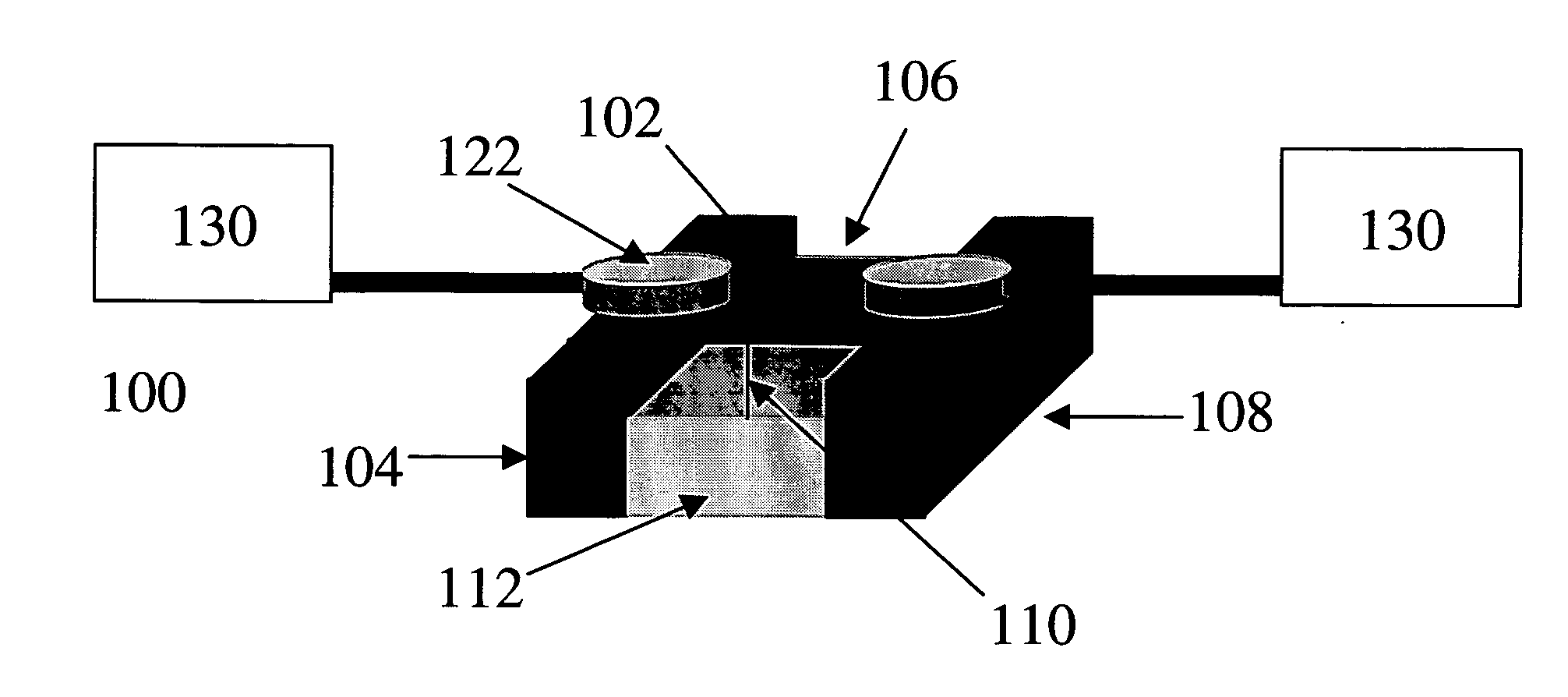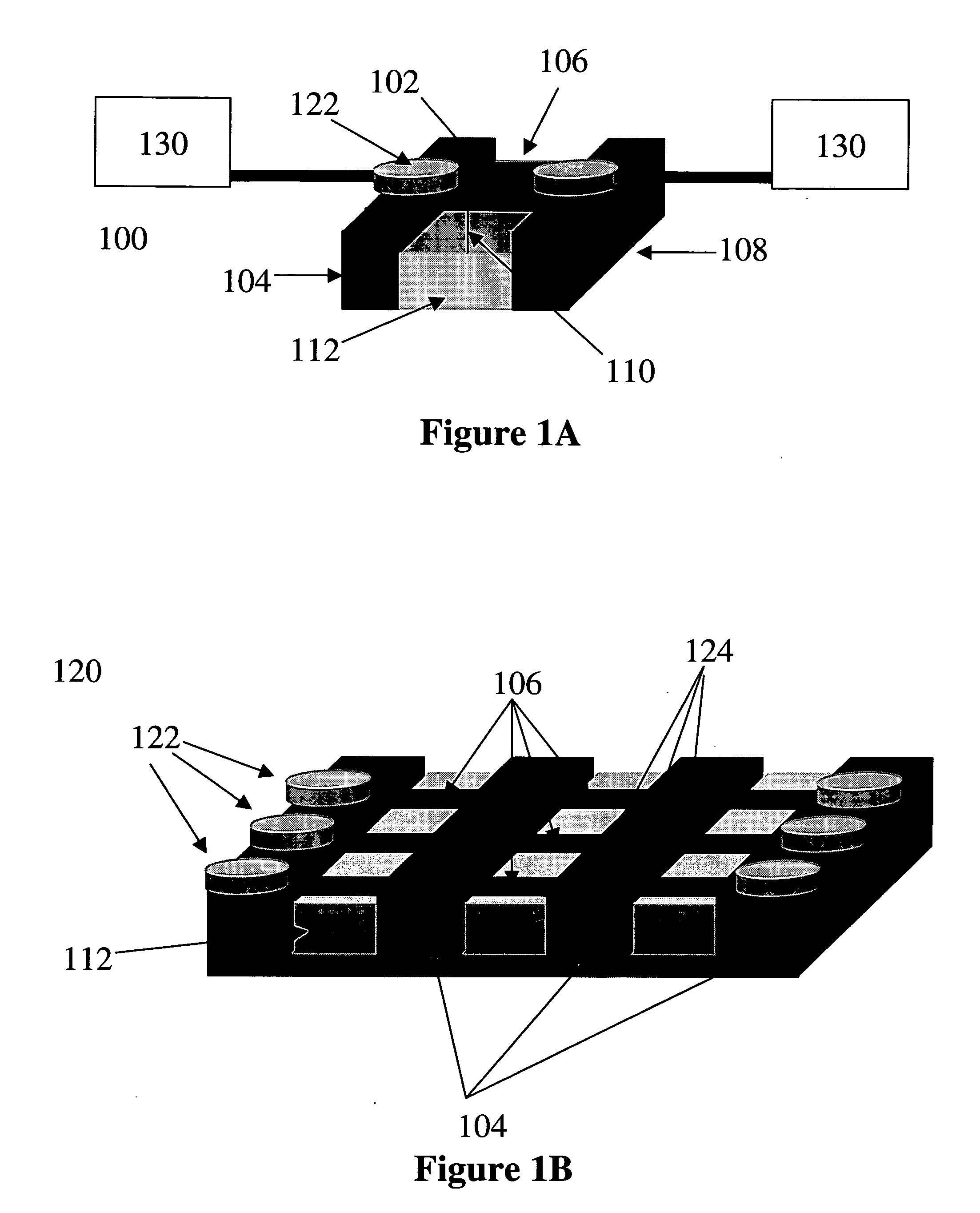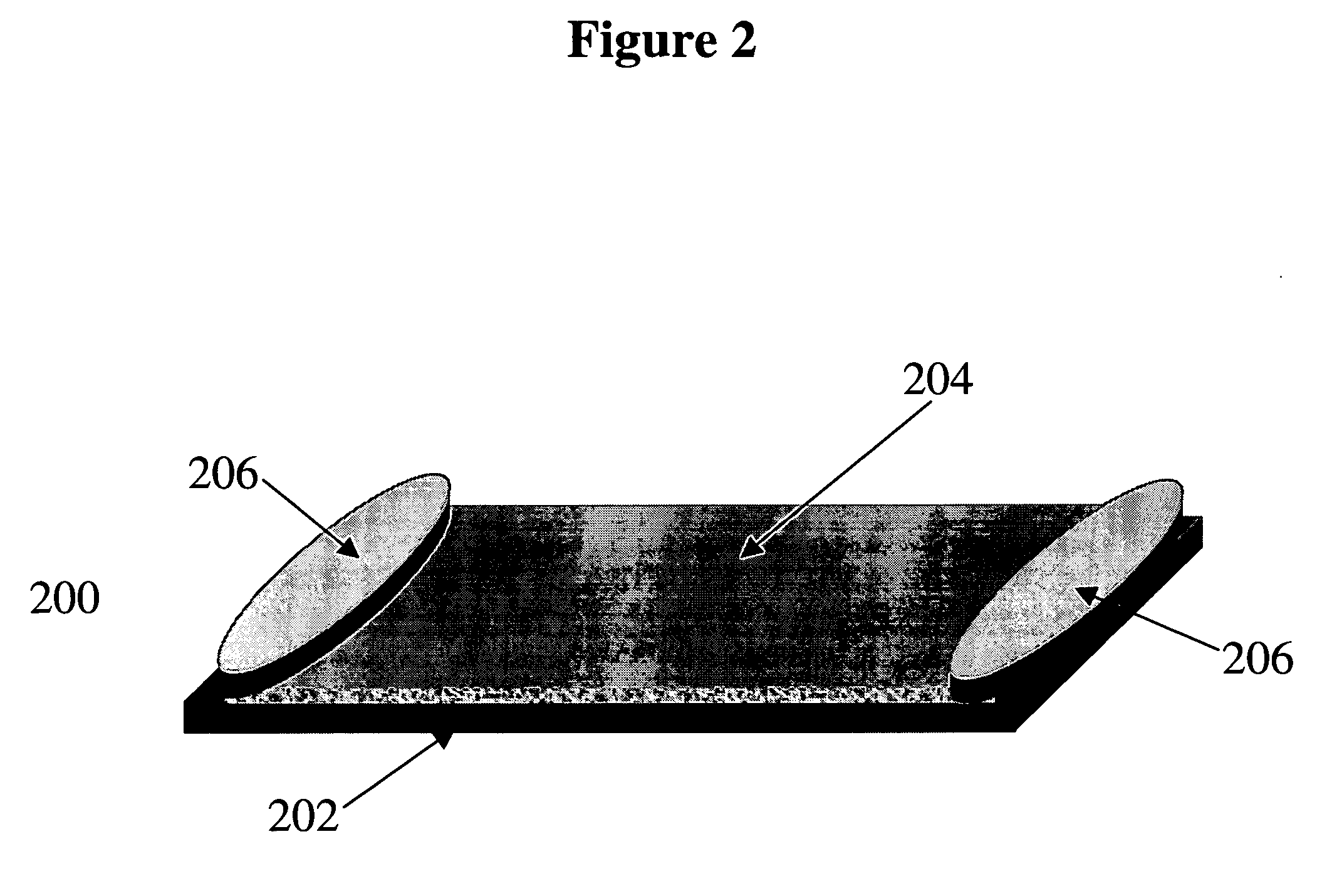Light emitters using nanotubes and methods of making same
a technology of nanotubes and light emitters, applied in the direction of discharge tubes/lamp details, nanoinformatics, discharge tube main electrodes, etc., can solve the problems of discrete components, inability to monolithically integrate, and typically micro-sized light emitters used in optoelectronic applications in the semiconductor industry. , to achieve the effect of low thermal conductivity and low thermal conductivity
- Summary
- Abstract
- Description
- Claims
- Application Information
AI Technical Summary
Benefits of technology
Problems solved by technology
Method used
Image
Examples
example 1
[0109]In this example, an addressable array of light emitting, suspended nanofabric articles is created. The setup is divided into three main parts:
[0110]the electrical control setup,
[0111]the chip holder; and
[0112]the optical detection setup.
[0113]The electrical control setup consists of a data acquisition system based on a National Instruments PCI-16XE-MIO-10 multipurpose DAQ card, with a BNC-2110 interface board. The DAQ card interface was written using National Instrument's Measurement Studio (Ver. 1.0) and Nidaq 7.01 with Microsoft's Visual Basic (Ver. 6.0). The electrical output (DAC0) goes through a Keithley 485 Pico-ammeter in order to measure the current going through the nanotube.
[0114]The electrical connections go through an interface connection with a sample holder (chip holder) designed to hold the 28 pin chips. The chip is has Argon gas flowing over the junction area (shown by the yellow tube going under the holder.
[0115]The optical detection setup consists of an Inver...
PUM
 Login to View More
Login to View More Abstract
Description
Claims
Application Information
 Login to View More
Login to View More - R&D
- Intellectual Property
- Life Sciences
- Materials
- Tech Scout
- Unparalleled Data Quality
- Higher Quality Content
- 60% Fewer Hallucinations
Browse by: Latest US Patents, China's latest patents, Technical Efficacy Thesaurus, Application Domain, Technology Topic, Popular Technical Reports.
© 2025 PatSnap. All rights reserved.Legal|Privacy policy|Modern Slavery Act Transparency Statement|Sitemap|About US| Contact US: help@patsnap.com



